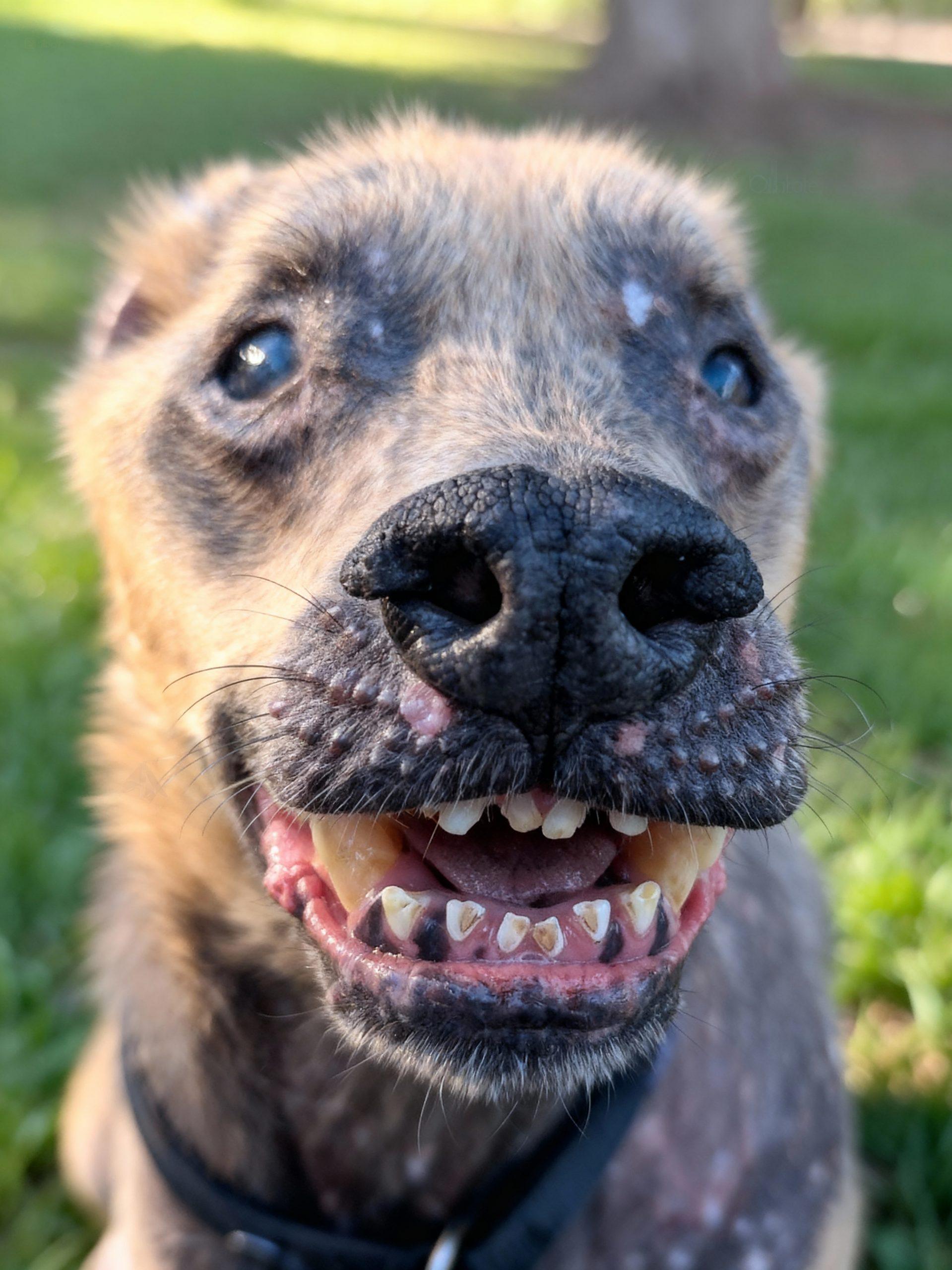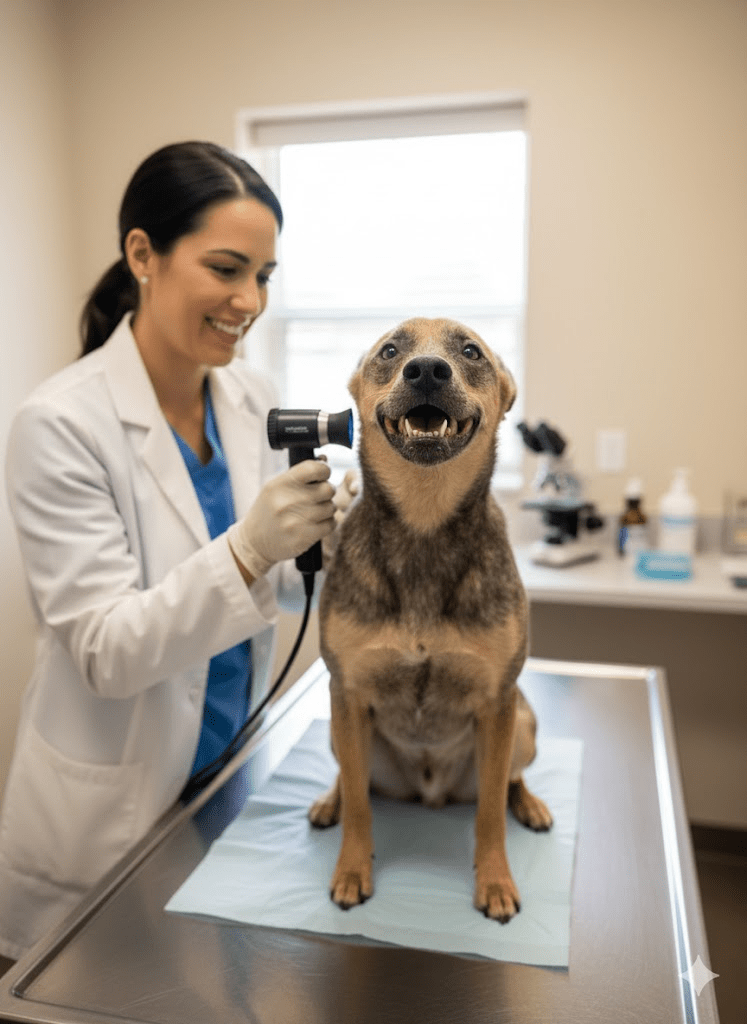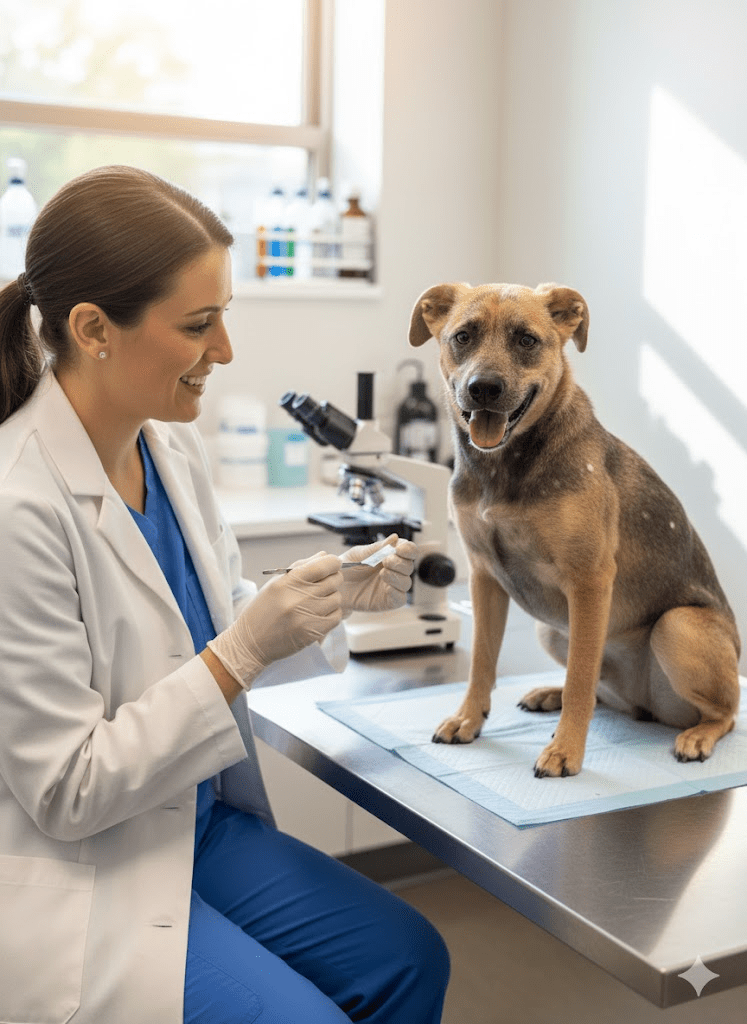Skin conditions in dogs are more common than many owners realize, ranging from mild irritations to chronic ailments that significantly impact a dog’s quality of life. The image before us, while perhaps striking, serves as a powerful reminder of the visible effects of such conditions and the resilience of the animals who endure them. It immediately draws attention to the texture of the fur and skin, the areas of hair loss, and the overall appearance that might suggest discomfort, yet the open mouth and bright eyes convey a spirit that is unyielding. This juxtaposition is crucial; it highlights that while the physical manifestations can be concerning, the underlying personality and joy of the dog often remain intact. This article will delve into the various aspects of canine skin conditions, from identification and diagnosis to treatment and supportive care, emphasizing the importance of early intervention and compassionate management to ensure our beloved companions live their fullest lives, irrespective of their dermatological challenges. Understanding these conditions is not just about veterinary science; it’s about empathy, dedication, and providing the best possible care for these loyal family members.

Identifying the various types of skin conditions in dogs is the first step toward effective management. These can broadly be categorized into several groups, each with distinct causes and symptoms. Allergic dermatitis, for instance, is extremely prevalent and can be triggered by environmental allergens like pollen, dust mites, or mold, as well as food sensitivities. Symptoms often include intense itching, redness, inflammation, and recurring ear infections. Parasitic infestations, such as fleas, ticks, and mites (like Sarcoptes or Demodex), also cause severe dermatological issues. Sarcoptic mange, caused by microscopic mites, leads to intense itching, hair loss, and scabs, particularly on the ears, elbows, and hocks. Demodectic mange, while less itchy, can result in patchy hair loss and thickened skin. Fungal infections, like ringworm, manifest as circular patches of hair loss with crusty borders. Bacterial skin infections, often secondary to other issues like allergies or parasites, can cause pustules, redness, and discomfort. Each condition presents its unique challenges, making accurate diagnosis crucial for targeted treatment.

Prompt: A professional veterinarian examining a dog’s skin, consistent with the dog’s appearance and mood from the original image. The veterinarian is smiling and gentle. The setting is a clean, well-lit examination room.
The diagnostic process for canine skin conditions is a methodical approach that relies on a combination of clinical examination, owner history, and various laboratory tests. A veterinarian will typically begin by taking a detailed history, asking about the onset of symptoms, diet, exposure to other animals, and any previous treatments. This is followed by a thorough physical examination, paying close attention to the skin, coat, ears, and paws. Depending on the initial findings, several diagnostic tests may be performed. Skin scrapes are common for detecting mites, where a small sample of skin is gently scraped and examined under a microscope. Fungal cultures are used to identify ringworm. Cytology, which involves examining cells collected from the skin, can reveal bacterial or yeast infections. For suspected allergies, veterinarians might recommend elimination diets or allergy testing. In some complex cases, a skin biopsy may be necessary to gain a definitive diagnosis. Accurate diagnosis is paramount because many skin conditions can mimic each other, and an incorrect diagnosis can lead to ineffective treatment and prolonged suffering for the dog.

Treatment protocols for canine skin conditions are highly specific to the underlying cause. For parasitic infestations, topical or oral medications designed to kill fleas, ticks, or mites are prescribed. Allergic dermatitis management often involves a multi-pronged approach: identifying and avoiding allergens where possible, administering antihistamines or corticosteroids to control itching and inflammation, and sometimes newer immunomodulating drugs. Medicated shampoos and topical treatments can soothe irritated skin, reduce itching, and help manage secondary infections. Bacterial infections typically require antibiotics, while fungal infections are treated with antifungals. In addition to targeted therapies, supportive care plays a crucial role. This can include dietary supplements rich in omega-3 fatty acids to support skin barrier function, special diets for food allergies, and regular grooming with gentle, hypoallergenic products. The goal is not just to eliminate the immediate symptoms but to restore the skin’s health and prevent recurrence, fostering long-term comfort for the dog.

Preventative measures and ongoing management are essential, particularly for dogs prone to chronic skin issues. Regular flea and tick prevention is a cornerstone of skin health. Maintaining a high-quality, balanced diet provides the necessary nutrients for a healthy coat and skin barrier. For dogs with known allergies, environmental control measures, such as frequent cleaning, air purifiers, and regular bathing with appropriate shampoos, can significantly reduce allergen exposure. Consistent grooming helps remove loose fur, dander, and environmental irritants. Regular veterinary check-ups are also crucial, allowing for early detection of potential problems and adjustments to treatment plans as needed. For some conditions, lifelong management may be required, involving a combination of medications, dietary adjustments, and careful monitoring. The commitment to ongoing care from owners is vital in ensuring these dogs maintain a good quality of life.

Supporting a dog with a skin condition goes beyond just medical treatment; it involves providing a loving and understanding environment. Chronic itching and discomfort can lead to behavioral changes, including increased anxiety, irritability, and even aggression in some cases. Owners need to be patient and observant, recognizing these signs and adjusting their interactions accordingly. Ensuring the dog has comfortable bedding, a stress-free living space, and plenty of mental and physical enrichment can significantly contribute to their overall well-being. Avoiding punitive measures for scratching or licking, and instead redirecting their attention or providing appropriate comfort, is crucial. Moreover, the emotional toll on owners can be significant, witnessing their beloved pet suffer. Seeking support from veterinary professionals and other pet owners can provide valuable insights and emotional resilience during challenging times.







